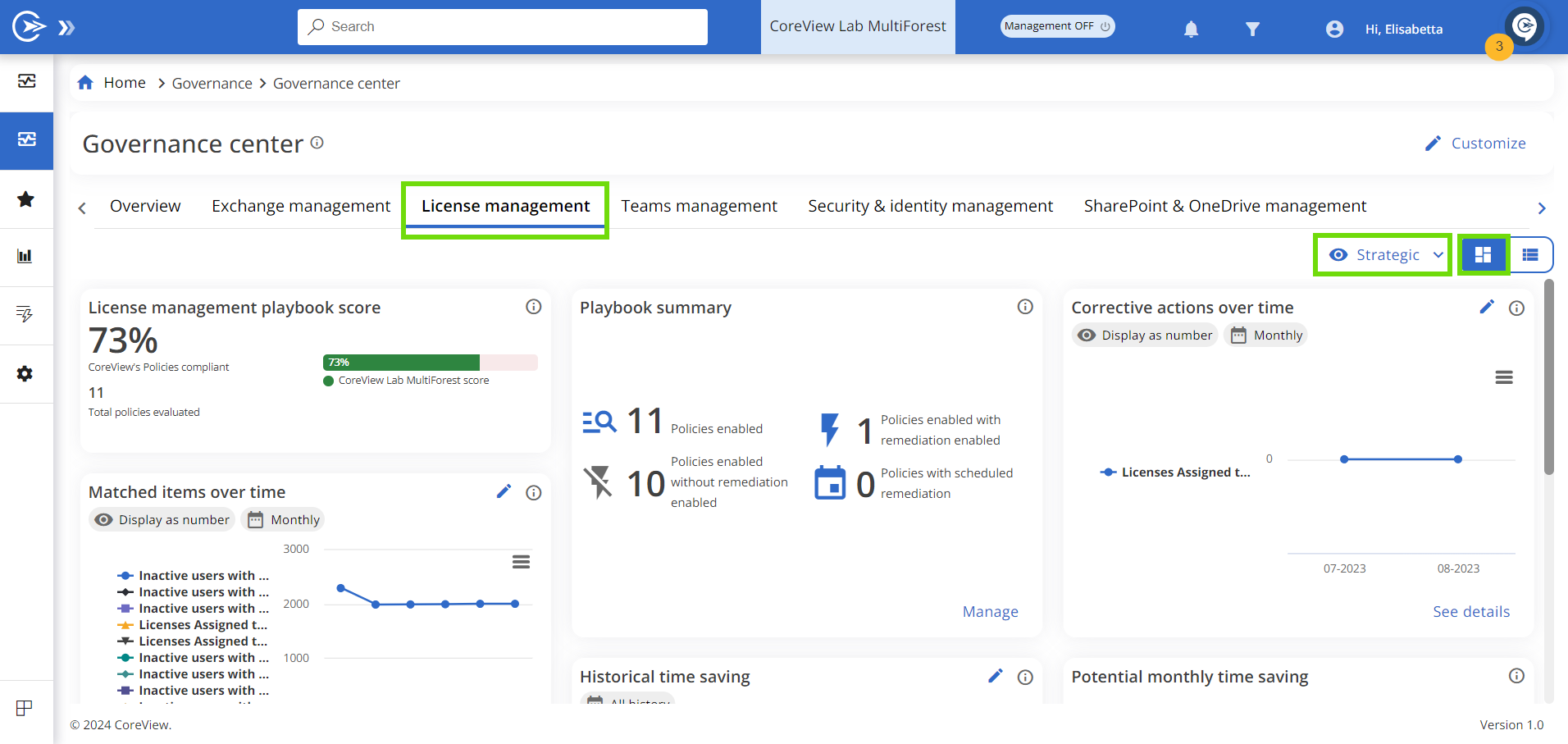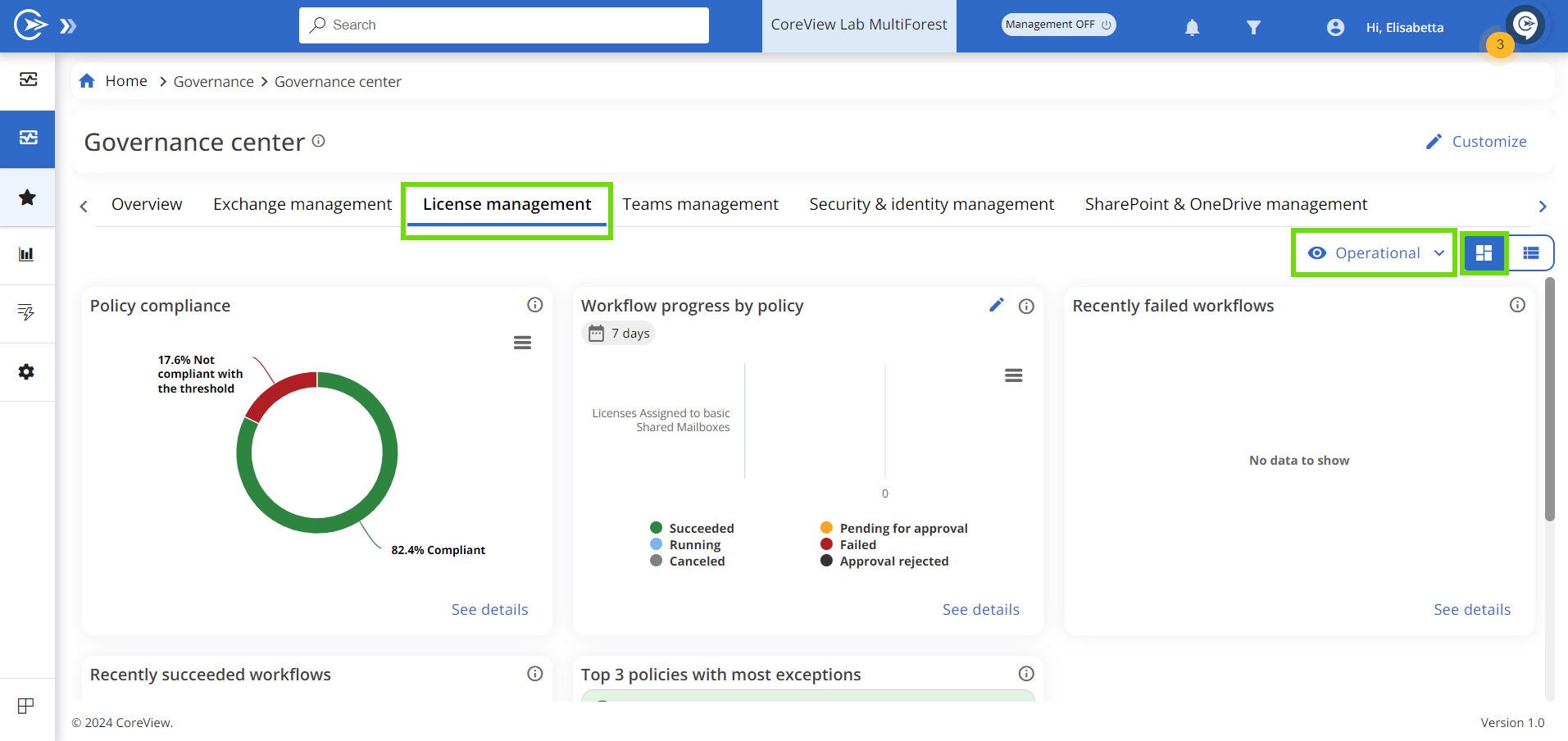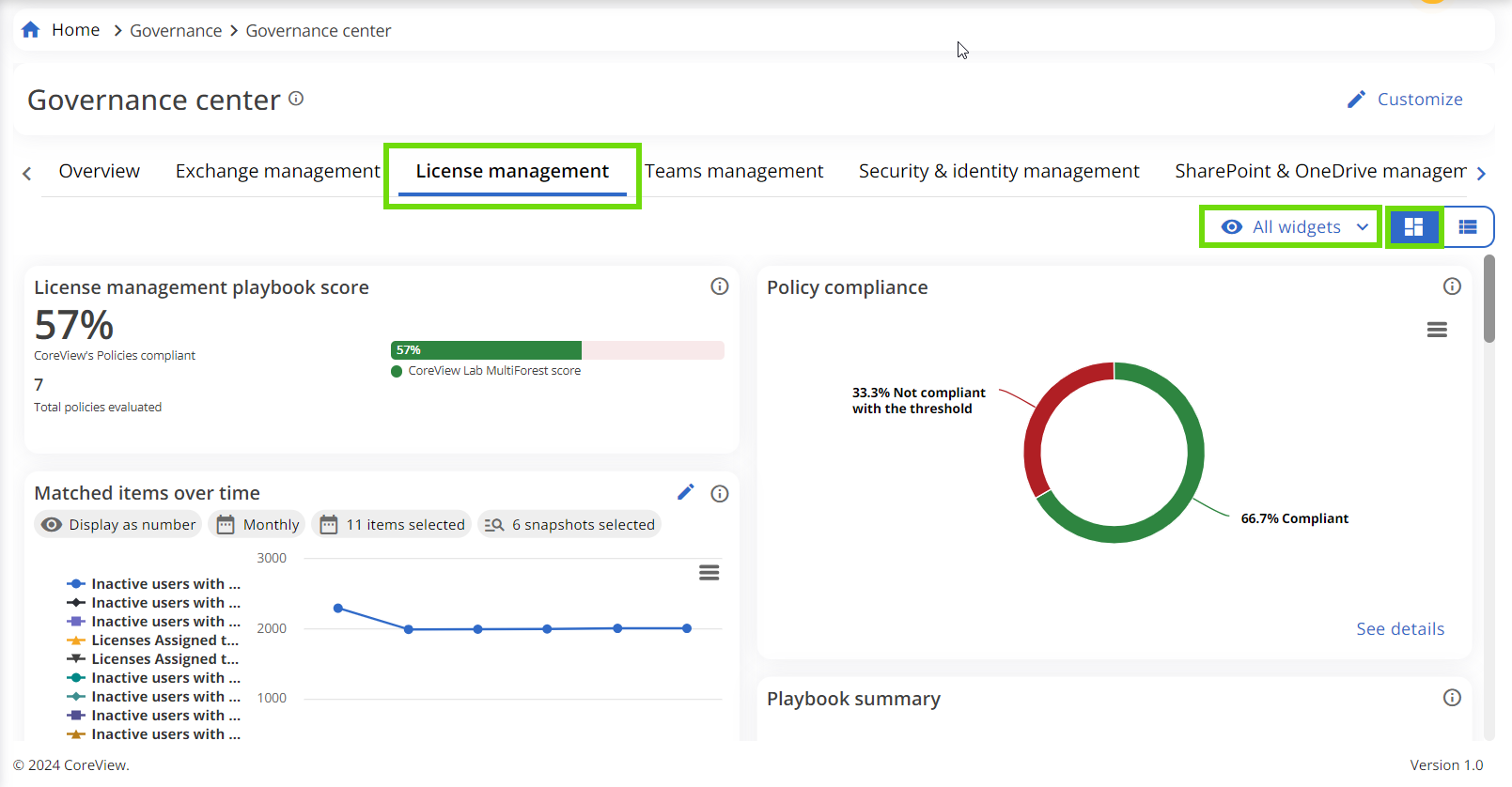Enterprise / Professional solutions
Please be aware that, within each Playbook tab, the dashboard view can only be accessed by Tenant Admins, and, given the appropriate permissions, by Playbook Admins and Global Viewers. Playbook Managers are restricted to accessing the list view of the Playbooks for which they have viewing permissions.
Playbook list view
In this section, both Tenant Admins and Playbook Admins, granted they have the necessary permissions, can manage their Playbooks. Every Playbook can be selected from the header. Playbook Managers, provided they have the suitable permissions, can access the list view but in a read-only mode.

Policy selection tabs
Above the policy list, four tabs are designed to help you focus on specific policy categories:
- Critical policies with violations: groups all Playbook policies marked with a “critical” severity level.
- Warning policies with violations: groups all Playbook policies marked with a “warning” severity level.
- Informational policies with violations: groups all Playbook policies marked with an “informational” severity level.
- Compliant policies: groups all Playbook policies compliant with their threshold, regardless of the severity level.
Clicking on a widget allows you to filter and display only the policies of the selected category. When viewing all policies without a filter, a color-coded icon in each policy box indicates the policy's severity level and compliance status.
Policy boxes
Each policy box comes with a series of icons that give you at-a-glance information about their status.

- Violations: this label displays the count of violations, next to the icon that indicates the severity level assigned to the policies. A green icon indicates that the policy is compliant.
- Exceptions: this icon reveals the number of matched items designated as exceptions, thus not considered violations.
- Schedulation: indicates whether remediation for the policy has been scheduled. A green "on" icon signifies scheduled remediation.
- Policy type: displays the origin of the policy creation. Policy types can be CoreView, MSP, or custom.
Filter Assistant
Located on the left side, just before the search bar, is a blue button. Clicking this button opens the Filter Assistant. It aids in narrowing down the policies you want to view. You can filter these policies by their configuration settings, such as remediation and policy statuses, or by their category.
Playbook widget views
Strategic view
When you choose the “Strategic” option for a Playbook dashboard, you will have visibility of the strategic widgets related to the selected Playbook. These are:
- Playbook score
- Matched items over time
- Corrective action over time
- Playbook summary
- Current snapshot of matched items
- Remediation history
- Potential monthly time saving
- Historical time saving

The Strategic view serves as a comprehensive log of Playbook actions performed across multiple weeks or months. It is particularly useful for setting strategic objectives and monitoring progress toward achieving them.
Operational view
When you choose the “Operational” option for a Playbook dashboard, you will have visibility of the operational widgets related to the selected Playbook. These are:
- Policy compliance
- Remediation progress by policy
- Recently failed workflow
- Recently succeeded workflow
- Top 3 policies with most exceptions

These widgets offer valuable insights into the various operations performed by the playbook, including the number of times a policy has been remediated, the number of exceptions managed and validated, and those that have not been addressed. By leveraging these metrics, users can better understand the Playbook's effectiveness and refine their strategy accordingly.
All widgets
When you choose the “All widgets” option for a Playbook dashboard, you will have visibility of both Strategic and Operational widgets.

By default, the filter is always set to “All widgets”.
Once you apply any of these views, the filter's result is user-specific, meaning only you will see the page with the applied filter. This view is exclusive to the tab you're currently on. If you change the tab or navigate away from the page, the filter will be removed.
